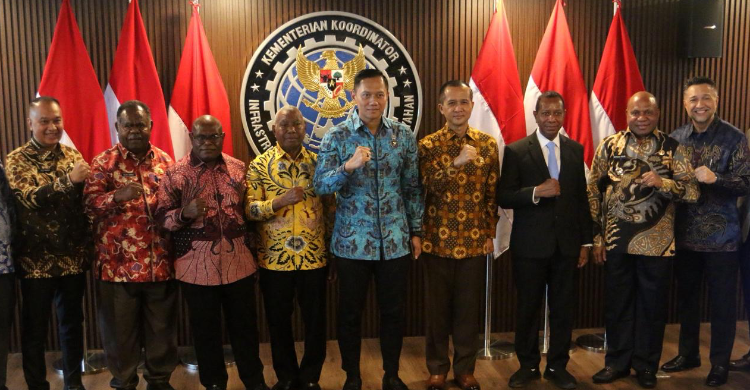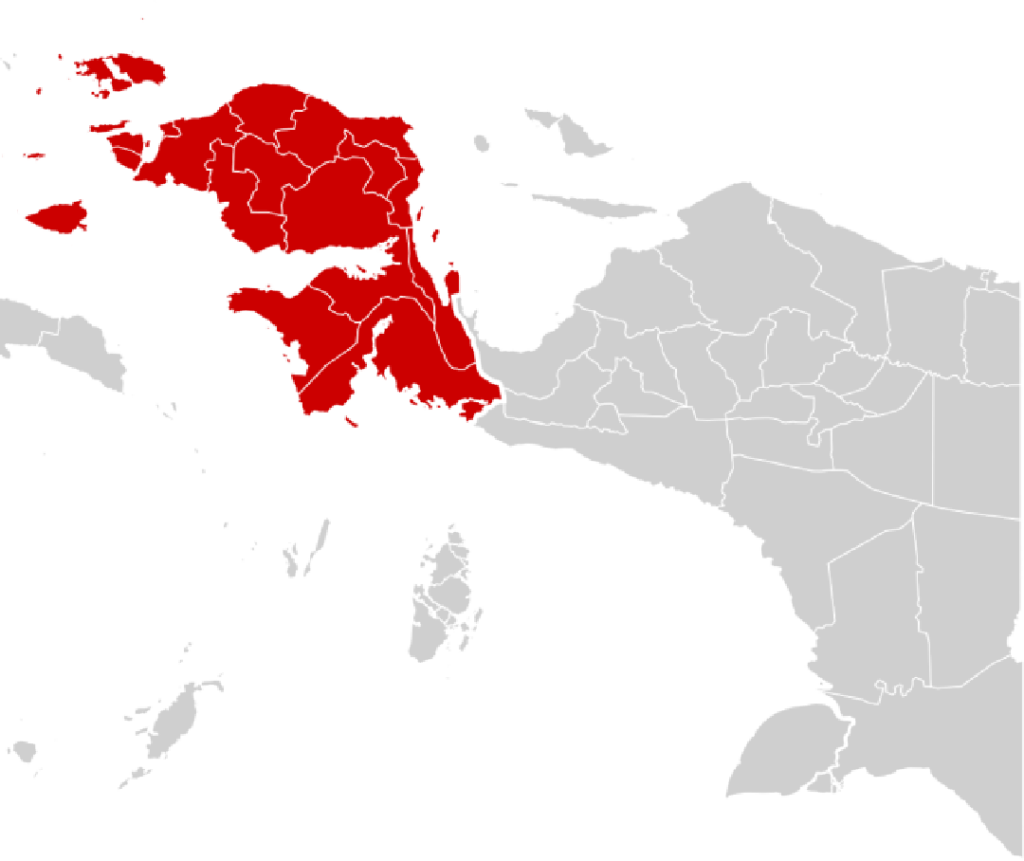In the vast, rugged highlands and dense tropical forests of Papua, development has long faced geographical and logistical challenges that few other regions in Indonesia encounter. Roads that wind through mountains, materials transported by air at exorbitant costs, and communities scattered across remote valleys have turned even basic infrastructure into a monumental task.
For Indonesia’s Coordinating Minister for Infrastructure, Agus Harimurti Yudhoyono (AHY), these challenges are not deterrents — they are calls to action. Since taking office under President Prabowo Subianto’s administration, AHY has become one of the key voices pushing for faster, more inclusive infrastructure development in Papua, calling it both a moral duty and a strategic necessity.
In recent statements quoted by Detik Finance and Republika, AHY emphasized that building Papua is not just about roads or bridges, but about connecting people, opportunities, and hope. “Infrastructure is the foundation of justice. Without access, there can be no equality,” he stated.
The Harsh Economics of Isolation
Papua’s unique geography means development comes with staggering costs. In some areas, the price of a single sack of cement can reach IDR 1.5 million — nearly 15 times the price in Java. Transporting basic materials requires air freight, often depending on small aircraft navigating unpredictable weather.
According to AHY, this economic burden is one of the main reasons the government must accelerate infrastructure projects like the Trans-Papua Highway, a 3,200-kilometer artery that will eventually connect isolated districts across Papua and Papua Pegunungan.
“Every kilometer we build here has a multiplier effect,” AHY explained during his visit to Jayapura, as cited by Kumparan and Tribunnews. “A new road means children can go to school, farmers can sell their crops, and medical teams can reach patients faster. Infrastructure is not a luxury here — it is survival.”
The government’s vision under the Papua Development Acceleration Program aligns closely with Indonesia’s long-term goal of reducing inequality between the western and eastern parts of the archipelago. For AHY, Papua represents both a challenge and an opportunity — a test of Indonesia’s unity and resilience.
Building Bridges, Not Walls
AHY’s approach is distinctly collaborative. Recognizing that development cannot succeed without local participation, he recently convened all five governors from the newly formed Papuan provinces — Papua, Papua Pegunungan, Papua Selatan, Papua Tengah, and Papua Barat Daya — to discuss shared priorities and coordination mechanisms.
The meeting, reported by RM.id and Sorong News, marked a pivotal moment in Indonesia’s regional development strategy. It underscored the government’s commitment to empowering local leadership while ensuring that national infrastructure plans align with the real needs of indigenous Papuans.
In that forum, AHY reiterated that Papua’s development must be inclusive and sustainable. “We are not just building roads. We are building trust, opportunity, and unity,” he said.
His statement reflects a shift in tone — from top-down directives to partnership and consultation. This approach aligns with the spirit of Special Autonomy (Otonomi Khusus), which grants Papua greater fiscal and administrative flexibility to manage its own development agenda while remaining under Indonesia’s national framework.
The Strategic Role of the Trans-Papua Highway
At the heart of Papua’s transformation is the Trans-Papua Highway, which AHY calls the “lifeline of the eastern frontier.” Stretching from Sorong in the west to Merauke in the southeast, this massive project aims to open access to regions that have long been cut off from the rest of Indonesia.
The government, through the Ministry of Public Works and Housing (PUPR) and in coordination with AHY’s office, has accelerated several key segments that were previously stalled due to terrain difficulties or security challenges posed by separatist groups.
According to Tribunnews and Inilah.com, AHY described the Trans-Papua project as a “national artery” essential for economic circulation and national security. “When connectivity improves, prosperity follows — and so does peace,” he said.
This perspective is grounded in practical observation. Studies by the National Development Planning Agency (Bappenas) show that infrastructure access in Papua directly correlates with improvements in education, healthcare, and trade activity. Regions that once depended entirely on air transport now have functioning road links that cut travel time from days to hours.
Addressing Security and Governance Challenges
Despite progress, the road ahead is not without obstacles. Security incidents involving the West Papua National Liberation Army (TPNPB-OPM) continue to threaten stability in certain areas, particularly in the central highlands. However, AHY stresses that the government’s response must balance firmness with empathy.
In his remarks to RRI Nasional, he noted that development in Papua must go hand-in-hand with peacebuilding. “Security is essential, but so is dialogue. The people of Papua want peace, and development can be the bridge toward that peace,” AHY said.
To ensure governance transparency, AHY also highlighted the importance of monitoring infrastructure funds under the Special Autonomy framework. His ministry has initiated joint evaluations with the Ministry of Finance and the regional governments to track project effectiveness and prevent misuse of public funds.
“We must ensure every rupiah spent in Papua truly benefits the people,” he asserted, signaling a strong anti-corruption stance within his portfolio.
The Human Dimension of Development
Behind the statistics and road maps are human stories — families waiting for clean water, farmers hoping to transport their cocoa harvest, teachers who walk miles to reach isolated schools. For AHY, these are not abstract beneficiaries but the real faces of Indonesia’s future.
During his field visit to Yahukimo and Wamena, he spoke with local community leaders who expressed optimism about the ongoing projects. “For the first time, we feel the government is listening to us,” said a village head quoted by Tribrata News Polri.
AHY has consistently advocated for community-driven planning, where local wisdom and needs shape the priorities of each infrastructure initiative. This participatory model, he argues, will ensure that Papua’s development is not imposed from Jakarta but grown from the ground up.
Balancing Environment and Progress
Papua’s environment — home to some of the world’s richest biodiversity — presents both an opportunity and a moral responsibility. AHY has called for all infrastructure projects to adopt strict environmental safeguards, ensuring that development does not come at the expense of the ecosystem.
Citing Papua’s rainforests as a “global treasure,” AHY said in a statement carried by Inilah.com that sustainable construction practices must guide every project. “We are developing Papua not to exploit it, but to preserve it for future generations,” he said.
This environmental commitment resonates with Indonesia’s broader agenda for green growth and renewable energy, especially as the country positions itself as a leader in sustainable development within ASEAN.
Political Will and National Unity
President Prabowo Subianto’s administration has declared Papua a national priority zone, and AHY’s ministry serves as the operational backbone for that vision. His leadership reflects a generational shift in Indonesia’s political landscape — one that blends strategic discipline with emotional intelligence.
In his speeches, AHY often returns to a theme of unity through equality. “Indonesia is not complete until Papua prospers,” he said in Jayapura. “The measure of our progress as a nation is how well we uplift those who have long been left behind.”
This message, echoed across media and public forums, underscores a deep-seated belief that national integration cannot rely solely on security — it must be built through fairness, access, and dignity.
Conclusion
Papua’s future lies at a crossroads of promise and perseverance. The challenges are formidable — rugged geography, high logistics costs, occasional security threats, and historical distrust. Yet under AHY’s leadership, the tone of national discourse has shifted from hesitation to determination.
Infrastructure is no longer just a government project; it has become a symbol of Indonesia’s enduring commitment to inclusion. Each bridge and kilometer of road built in Papua is, in AHY’s words, “a bridge to equality, a road to peace.”
As the Trans-Papua Highway continues to cut through mountains and connect communities, it carries more than vehicles — it carries the aspirations of a region long waiting to share fully in Indonesia’s prosperity.
And if the government’s current momentum holds, the dream of a more connected, equitable, and peaceful Papua may no longer be a distant vision, but a living reality — one road, one bridge, and one community at a time.


